Québec City & Montreal: Fab Northern Neighbors
If the euro is too strong a force to reckon with, stick to dollars—Canadian dollars, that is—in the great big foreign country just a couple hours away by plane. Canada’s Québec province is filled to the brim with a pseudo-European culture passed down from the English and French explorers and settlers who colonized the region, making for truly special “old continent” flair right here in the New World.
For the biggest taste of French culture, start in Québec City. The provincial capital’s historic center—a UNESCO World Heritage Site—is perched on a mountainside overlooking the St. Lawrence River. At the top, the castle-like hotel Fairmont Le Chateau Frontenac (from $160, 1 rue des Carrières, fairmont.com) majestically crowns the city, its regal brick exterior, tunnels and balconies seeming to belong to the city’s own ramparts. Inside, the ornate palace welcomes visitors to its fine spa, on walking tours or for a toast at the stately bar, which offers beautiful views of the promenade outside and the river below. A lower-key stay would be the Hotel Clarendon (from $89, 57 rue Sainte-Anne, hotelclarendon.com), the oldest hotel in the city and a historic Art Nouveau building right in the middle of Old Québec.
Old Québec, which just celebrated its 400th birthday last year, boasts winding cobblestone streets lined with cute shops, little houses and hills—lots of them, and steep ones at that. Most of the charm can be enjoyed by foot, so put on your walking shoes and explore. Or, venture past the Citadel outside the fortifications, through the Plains of Abraham (where the battle for control of the city took place in 1759, today an expansive and lovely park), to the Upper Town, along Grand Allée. After a good walk (or free écolobus electric bus ride) along the grand Victorian-lined boulevard, pub crawl on Avenue Cartier with the young locals. Then head back along fashionable Boulevard René-Lévesque, and downhill to rue St-Jean, which hosts gourmet food shops, vegetarian cafes and Québec City’s one gay bar: Le Drague (815 rue St-Augustin, ledrague.com).
If, after a few days, the postcard-perfect beauty gets to be a little too quaint, hit the road. The nearby Charlevoix region makes for a gorgeous day trip. Just head north on the 138 toward Beaupre, an artist-populated village. Then continue on the highway along the widening St. Lawrence for incomparable vistas. Veer off in Baie-Saint-Paul and follow the winding roads toward a ferry to the idyllic Ile aux Coudre. The island features a rugged coastline on the now ocean-like river, fields of wildflowers and farmhouses, scenic bike paths and apple orchards producing the region’s best invention—ice cider. Buy a bottle of the refreshing stuff at Ciderie Verger Pedneault (2284 Ch. Des Coudrier, charlevoix.net/vergerpedneault) and then consume with a picnic in a secluded spot on their orchard. The splendor will go right to your head.
To contrast the quiet, rural beauty of the Charlevoix, bustling and très-gay Montréal is just a quick train ride from Québec City. Montréal’s gay scene comes closer to mirroring that of New York’s than any other city in the Northeast in that there are diverse gay populations, distinct neighborhoods colonized by varying generations of queers, and a vocal, active gay citizenship making its mark upon the greater city. The best example of the latter is Restaurant La Paryse (302 Ontario East, 514-842-2040), a retro-styled Latin-Quarter burger joint owned and operated for the past three decades by the titular Paryse—a pioneer not only in the gay community (she both employs and provides a hangout for new lesbians in town) but for women business owners of the city. Not to mention the burgers are incredible—and the nice wine list rounds out the food experience.
For more classic Montréal eats, join the local argument as to who makes the best bagels in town: Fairmount (75 ave Fairmount Ouest, fairmountbagel.com) or St. Viateur (263 rue Saint-Viateur, stviateurbagel.com). According to lore, one is an offshoot of the other and both use the same recipe (secret ingredient: honey) but everyone’s got a preference. Another local legend is Schwartz’s (3895 Boulevard Saint-Laurent, schwartzsdeli.com)—a kind of Katz’s or Second Avenue Deli, specializing in what Canadians call “smoked meat” but New Yorkers would think of as a hybrid between corned beef and pastrami. You’ll have to wait in line for a seat in their cramped quarters, but it’s worth it.
While you wait, keep busy by window-shopping on Saint-Laurent, the busiest and best street in the city. Lined with everything from Canadian chains to thrift shops to high-end couturiers—and loads of restaurants—Saint-Laurent spans from the touristy downtown all the way along the Plateau Mont-Royal, Montreal’s neighborhood for the trendy and stylish. The Plateau is completely gay-integrated, but it’s widely considered that the gays are the ones who got this neighborhood going in the first place by buying up the property and making it quite the attraction. Other shops to check out include Le Marche Mtl (24 ave des Pins E, lemarchemtl.com) for fun vintage and new handmade items and Usine 106U (160 Roy E, myspace.com/usine106u), a combination flea market, gallery and radical coffeehouse.
For more of a West Village-style gay ghetto, stick to the Gay Village, centered around rue Sainte-Catherine. The Gouveneur Place Dupuis (from $85, 1415 Sainte-Hubert Street, gouverneur.com), recommended by the IGLTA, is located just off crazy Sainte-Catherine in the heart of the city’s gay district. From June to September, Saint-Catherine is closed to automobiles, so a drunken, bar-hopping evening along the row of restaurants and pubs is practically encouraged. Lesbians are usually found at Le Drugstore (1366 rue Sainte-Catherine Est, 514-524-1960) on Fridays. A mixed crowd dances the night away at Sky Club (1474 rue Sainte-Catherine Est, complexesky.com), which, in addition to DJs and sweaty comingling, has a stage for drag shows. Basically anywhere else you go on this street will be gay to some extent, but if you want to find more specifically women’s events and parties—especially one-offs—check out the calendar of lesbian site No More Potlucks (nomorepotlucks.org/calendar). If you’re in town this summer, lesbian nightlife and entertainment will abound around Divers/Cite (July 26–August 2, diverscite.org), Montreal’s massive Pride celebration.
End up staying out till daylight, and you might as well enjoy the sun and not-too-humid weather. Rent a bike from Ca Roule (27 De La Commune Est, caroulemontreal.com) and take yourself on tour of the industrial and newly developed Canal Lachine. Or, just be driven around—in a jet boat on the rapids of the Lachine. Just a short way off the city’s old port, there are violent, thrashing waves making for a theme-park-caliber thrill ride, au natural. Saute Moutons (jetboatingmontreal.com) runs jet boats over the rapids for a dizzying and adventurous way to experience Montreal.
For more on Québec City visit bonjourquebec.com, and for the surrounding areas, including the Charlevoix, visit quebecregion.com. Further info on Montreal’s gay life can be found at tourisme-montreal.org/Traveller/Gay-and-Lesbian.
Aruba: Sand and Sun
If stripping down is how you know you’re really on vacay, Aruba has exactly what you are looking for—endless pristine miles of sand. Its Dutch roots lend it a more tolerant outlook toward homosexuality than many of its Caribbean neighbors. But this is a small place—its colorful capital Oranjestad is home to less than 33,000—dominated by tourists and the hotel industry, so gay life functions here as it does in any small town: integrated, borderline underground. There’s one official gay nightspot, the hole-in-the-wall Jimmy’s Place (Kruisweg 15, jimmysaruba.com). Other off-the-beaten-path bars welcoming a mixed gay/straight clientele include cow-décor-crazy The Paddock (L.G. Smith Boulevard #13, paddock-aruba.com) and Café Twister (Dominicanessenstraat 10, +297-5839077).
Aruba is proving increasingly popular for gay and lesbian destination weddings and honeymoons. The TAG-approved Renaissance Aruba Resort & Casino (from $196, L.G. Smith Boulevard #82, Oranjestad, marriott.com), the Hyatt Regency Aruba (from $315, J.E. Irausquin Blvd #85, Palm Beach, aruba.hyatt.com) and Bucuti Beach (from $250, L.G. Smith Boulevard #55B, Eagle Beach, bucuti.com) are some of the friendlier hotels for such events. Bucuti actually has a full-time wedding planner (weddings@bucuti.com) who is considered an expert for same-sex ceremonies, according to the island’s tourism board.
However you want to spend your honeymoon or getaway—spread out on the sand, deep sea fishing, scuba diving, hiking in Arikok Park or learning about the production of aloe at the Aruba Aloe Museum (which you’ll need quantities of after all that sun)—activities are plentiful and easy to arrange through your hotel.
This spring is an especially good time to visit. In May, you can catch the Aruba Food & Wine Festival (May 22–24, Westin Aruba Resort, J.E. Irausquin Blvd #77, Palm Beach) and the Aruba Soul Beach Music Festival (May 20–25, Aruba Entertainment Center, soulbeach.net), which has welcomed acts like Alicia Keys, Lauryn Hill and Chaka Khan in the past.
Visit aruba.com for more info and ideas about how to plan your trip.
Dublin: Go Wilde
New York’s St. Patty’s Day festivities are long over, but if the taste of Irish Pride has got you craving another gulp of Guinness, there is a remedy. Instead of visiting every Shamrock-adorned watering hole in the city, jet across the pond for a quick and queer getaway to Dublin. Round-trip flights from NYC to Ireland’s capital hover around $300 all spring—cheaper than to any other European city and many places in the US—so Dublin is the perfect destination for individuals suffering from wanderlust and a diminished spending account.
There’s a reason “luck o’ the Irish” is a phrase—there are endless numbers of dance clubs and dives where gays can get lucky. But, as in most cities smaller than, say, New York, a composite gay scene is the norm. In Ireland, drinking is not so much an evening activity as a national sport, and The Dragon (South Great Georges St, +353 1 4781590) is the first place to check out if libations are in order upon arrival. The city’s massive gay disco consists of two floors full of writhing young’uns and a smoker-friendly terrace and beer garden. Alternaqueers flock to Q + A (queerandalternative.com), a floating, irregularly scheduled party drawing some 700 tattooed, pierced and adorable hipster types. For a girls-only experience, plan your trip around Kiss, a lesbian dance party occurring on the third Saturday of every month at the Tivoli (Francis Street). Gay boyfriends are also welcome, of course.
There’s more to Dublin than a party scene. Trinity College Dublin (6 Palmerston Place) offers historical walking tours exploring the main features of Irish history—Dublin’s development, the influence of the American and French Revolutions, the Potato Famine 1845-49, the 1916 Rising, the War of Independence, partition—and concludes with the Northern Ireland peace process and Ireland today.
Sightseers will also want to visit Christ Church Cathedral (corner of Winetavern Street and Christchurch Place). First constructed in XI century and restored in the XIX century, Christ Church is the oldest and most recognized landmark in Dublin.
Theater buffs won’t want to miss the sixth annual international Dublin Gay Theatre Festival (May 4–17, gaytheatre.ie). Festival organizers promise a whole lotta lesbian programming still to be announced at press time. Also of note is the world-renowned Gate Theater (Cavendish Row, Parnell Square, gate-theatre.ie), which sent an acclaimed Samuel Beckett production to New York’s Lincoln Center in 2008, starring Ralph Fiennes and Liam Neeson. The theater was founded in 1928 by Hilton Edwards and Micheál MacLiammóir, a gay couple.
Literature lovers probably already know that the openly gay playwright and socialite Oscar Wilde was born in Dublin. Oscar Wilde House (1 Merrion Square) has been absorbed by the American College Dublin, but the larger-than-life literary figure can be visited in statue form in Merrion Square across from his birthplace—the monument is also known as “The Queer with the Leer,” “The Fag on the Crag,” or “The Quare in the Square.” Cultural events coming up this summer include the 25th Annual Dublin Pride (June 13–21, dublinpride.org) and Gaze, the Dublin International Lesbian & Gay Film Festival (July–August, gaze.ie).
A street called “Dame” is our kind of street. And Mermaid Café (69-70 Dame Street, mermaid.ie) is a gay-owned restaurant ensuring the street stays in “the family.” The café offers a yummy Sunday brunch, with items like homemade sourdough pancakes and jugs of bellinis. Crunchy chicks will enjoy the Amnesty International Café (48 Fleet Street, store.amnesty.ie), in the former location of the Irish Women Workers’ Union. The building now houses the Irish bureau of the organization, and in addition to a shop featuring goods from around the world, the café serves fair-trade and guilt-free coffee, sandwiches and snacks.
Cooks can make their own meals from goods picked up at the Temple Bar Food Market (Saturdays, Meeting House Square, templebar.ie). The trendy neighborhood hosts this weekly extravaganza featuring local farm-grown produce and a plethora of gourmet items to please any foodie.
It’s hard to think of Ireland without thinking of U2, so if star… er, following is your thing, check into Bono’s swank Clarence Hotel (from EUR 179, 6-8 Wellington Quay, theclarence.ie) on the River Liffey. Described as a “personal vision of the hotel’s owners, a place they would choose to stay,” members of the Irish rock group apparently love luxurious super king-size beds, sleek design, and the colors crimson, royal blue, amethyst, gold and chocolate—the hotel’s signature decorating scheme. For a lower-key stay, the Nua Haven (from EUR 100, 41 Priory Rd, Harold’s Cross, nuahaven.com) guest house is a gay-owned retreat 10 minutes south of the city. A low-budget, gay-friendly b&b close to the city center is Ashling House (from EUR 35, 168 Upper Drumcondra Rd, ashlinghouse.ie), which combines a no-frills interior with a peaceful landscaped garden in a quiet, leafy, tree-lined neighborhood.
To find more specific events and info, like details of a monthly FTM social or women-seeking-women classifieds, check out GCN (gcn.ie), an Ireland-wide gay publication. Their “In & Out” section provides daily nightlife listings.



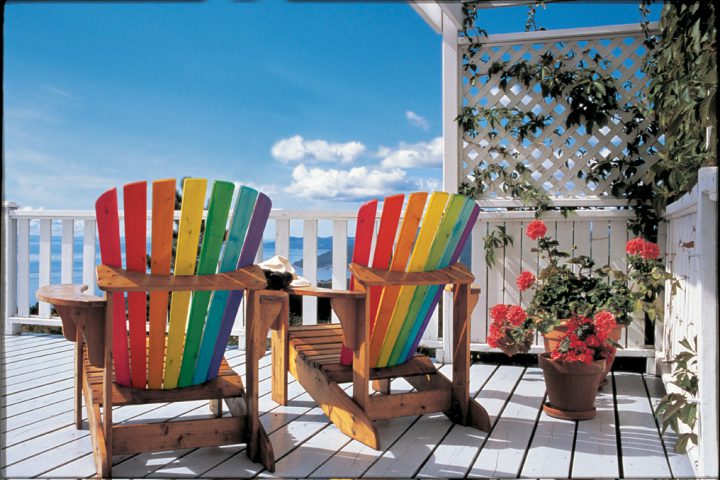

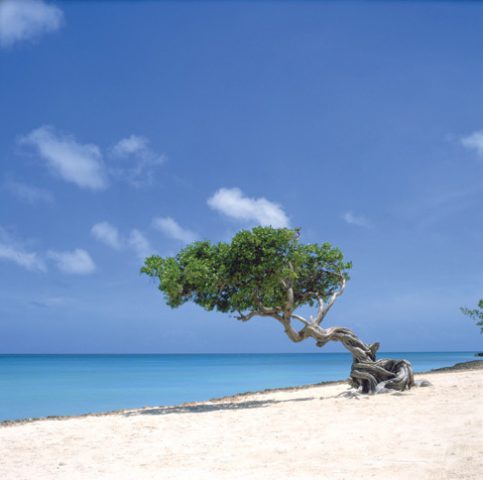
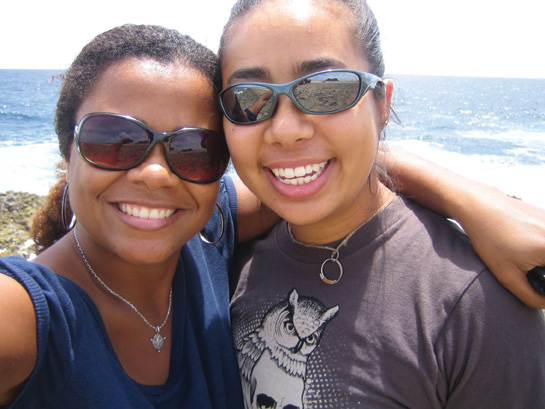

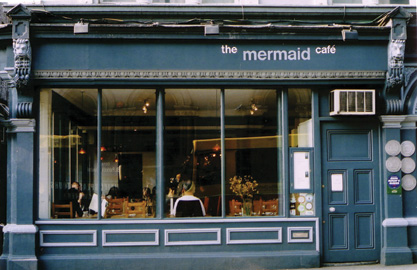
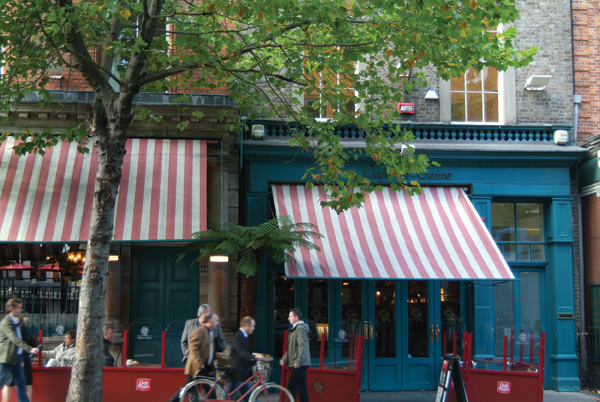


What Do You Think?